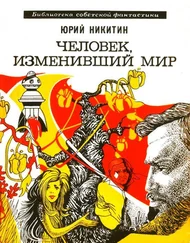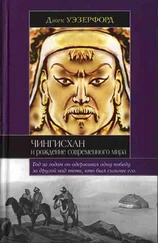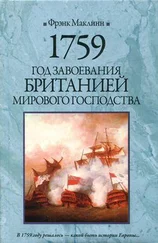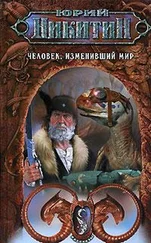Rachewiltz, In the Service p. 159; P. Ratchnevsky, 'Sigi-qutuqu,' Central Asiatic Journal 10 (1965) pp. 87–110 (at p. 87).
Rachewiltz, 'Yeh-lu… Buddhist Idealist,' loc. cit. p. 202.
Franke & Twitchett, Cambridge History p. 378.
J. Masson Smith, 'Mongol and nomadic taxation,' Harvard Journal of Asiatic Studies 30 (1970) pp. 46–85. For the unsystematic fiscal approach of the Mongols see A. K. S. Lambton, 'Mongol fiscal administration in Persia,' Studia Islamica 44 (1986) pp. 79–99; 45 (1987) pp. 97–123.
Morgan, Mongols pp. 100–103.
Kwanten, Imperial Nomads pp. 128–129.
d'Ohsson, Histoire II p. 63.
Some of the administrative implications of this are teased out in F. W Cleaves, 'A Chancellery Practice of the Mongols in the Thirteenth and Fourteenth Centuries,' loc. cit. pp. 493–526.
Rachewiltz, 'Yeh-lu… Buddhist Idealist,' loc. cit. p. 205.
Rachewiltz, In the Service pp. 60–69.
Farquhar, Government of China p. 45; Gernet, Daily Life p. 65; Fairbank & Goldman, China pp. 95–107; Elman, Civil Examinations.
Makino Shuji, 'Transformation of the Shih-jen in the late Chin and early Yuan,' Acta Asiatica 45 (1983) pp. 1–26.
Ch'i-ch'ing Hsiao, 'Yen Shih, 1182–1240,' Papers on Far Eastern History 33 (1986) pp. 113–128 (at pp. 119–122).
Rachewiltz, 'Yeh-lu… Buddhist Idealist,' loc. cit. p. 202; Rachewiltz, In the Service p. 151.
Rachewiltz, 'Yeh-lu… Buddhist Idealist,' loc. cit. p. 202; Rachewiltz, In the Service p. 165.
Franke & Twichett, Cambridge History p. 377.
On this subject in general and its implications see Nikolay N. Kradin, 'Nomadic Empires: Origin, Rise and Decline,' in Kradin et al, Nomadic Pathways pp. 73–87; Kradin, 'Nomadism, Evolution and World Systems: Pastoral Societies and Theories of Historical Development,' Journal of World-Systems Research 8 (2002) pp. 363–388.
Franke & Twitchett, Cambridge History p. 377.
Thomas T. Allsen, 'Sharing out the Empire: Apportioning Lands under the Empire,' in Khazanov & Wink, Nomads and the Sedentary World pp. 172–190.
Jackson, Mongols and the West p. 291.
JB I pp. 209–210, 213–215.
Rachewiltz In the Service p. 160.
Rachewiltz In the Service p. 160.
Franke & Twitchett, Cambridge History p. 377.
Abel-Remusat, Nouveaux melanges II pp. 64–68.
For Shih-mo Hsien-te-pu see Rachewiltz, In the Service pp. 147–148, 160; Waley, Travels of an Alchemist p. 53. For Buyruq Qaya (1197–1265) see In the Service pp. 480–481; Buell, Dictionary p. 128; Buell, A-Z of the Mongol Empire p. 40.
Rachewiltz, In the Service p. 165.
For the latter phase of Yelu's relationship with Ogodei see Bretschneider, Mediaeval Researches I pp. 12–24; Tanner, China: A History I pp. 239–280.
Franke & Twitchett, Cambridge History p. 378.
Franke & Twitchett, Cambridge History p. 380.
Rachewiltz, 'Yeh-lu… Buddhist Idealist,' loc. cit. p. 208.
Rachewiltz, 'Yeh-lu… Buddhist Idealist,' loc. cit. p. 208.
В российской историографии второй сын Угэдэя — Годан, Кодан, Кудэн. — Прим. пер .
Rachewiltz, 'Yeh-lu… Buddhist Idealist,' loc. cit. p. 215; Rachewiltz, In the Service pp. 105–106, 125.
Michael Weiers, Geschichte der Mongolen p. 76.
Gregory G. Guzman, 'European Captives and Craftsmen among the Mongols, 1231–1255,' The Historian 72 (2010) pp. 122–150.
Jackson & Morgan, Rubruck pp. 182–183; Pelliot, Recherches pp. 161–164; J. Schneider, Metz pp. 191–192.
For Beshbaliq see JB I pp. 271–272; Barthold, Four Studies I pp. 114–115. For Kemkemjek see Asimov & Bosworth, History of Civilizations iv part 2 p. 584.
Jackson & Morgan, Rubruck pp. 144–145.
Bretschneider, Mediaeval Researches II p. 331.
JB I pp. 236–239; JR II pp. 1140–1141; Boyle, Successors pp. 61–62; Bretschneider, Mediaeval Researches I p. 123; Pelliot, Notes sur Marco Polo I pp. 166–167; Jackson & Morgan, Rubruck pp. 209–213, 221; Dawson, Mongol Mission pp. 156, 183–184. See also Phillips, Mongols pp. 96–103.
Asimov & Bosworth, History of Civilizations iv part 2 pp. 582–583.
Другой вариант названия — «Дворец десяти тысяч лет благоденствия». — Прим. пер .
Jackson & Morgan, Rubruck pp. 209–210.
See the essays by Hans-Georg Huttel in Hirmer Verlag, Dschingis Khan pp. 133–137, 140–146.
Morgan & Jackson, Rubruck pp. 178–179; Pelliot, Recherches pp. 161–164; Durand-Guedy, Turko-Mongol Rulers p. 232; Shiraishi Noriyuki, 'Avraga Sita: the "Great Ordu" of Genghis Khan,' in Komaroff, Beyond the Legacy pp. 83–93 (at pp. 89–90).
Thomas T. Allsen, 'Command Performances: Entertainers in the Mongolian Empire," Russian History 28 (2001) pp. 37–46.
J. A. Boyle, 'The Seasonal Residences of the Great Khan Ogodei," Central Asiatic Journal 16 (1972) pp. 125–131, reproduced in Hazai & Zieme, Sprache, Geschichte und Kultur pp. 145–151.
Eva Becker, 'Karakorum — Bukinic vs. Kiselev," Zentralasiatische Studien 37 (2008) pp. 9–32.
SHC pp. 227–228; SHR pp. 217–218.
Latham, Travels of Marco Polo pp. 150–155.
Boyle, Successors pp. 62–64.
For the Pony Express see Settle, Saddles and Spurs. See also Alberto E. Minetti, 'Efficiency of Equine Express Postal Systems', Nature 426 (2003) pp. 785–786.
As with the tumens, these notional figures were not always attained. One study finds the sources providing figures ranging anywhere between fifteen and five hundred horses at the ready, depending on the nature and location of the posts (Lane, Daily Life p. 121).
Olbricht, Postwesen in China pp. 36–41, 66, 87.
Ricci, Marco Polo pp. 152–157.
Ratchnevsky, Genghis Khan pp. 180–181: Silverstein, Postal Systems.
Читать дальше
Конец ознакомительного отрывка
Купить книгу







![Ксения Чепикова - Человек, научивший мир читать [История Великой информационной революции]](/books/388624/kseniya-chepikova-chelovek-nauchivshij-mir-chitat-ist-thumb.webp)

